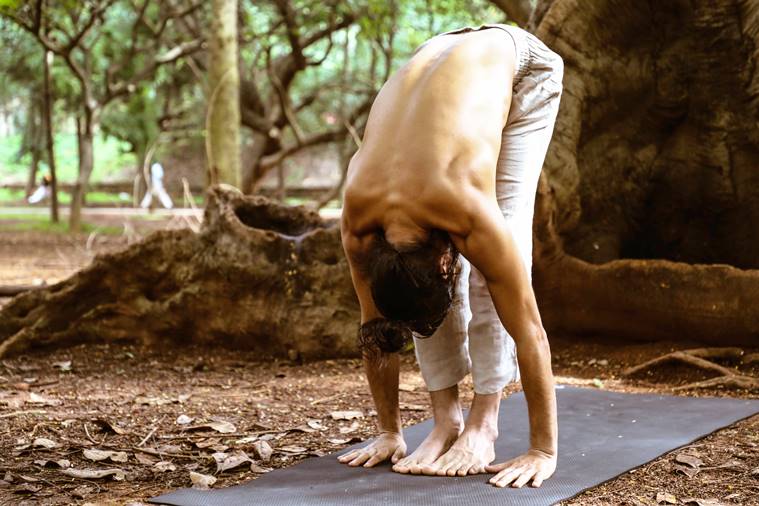Yoga for diabetes patients: Keep your blood sugar levels under control with these asanas
Since the focus of yoga is to provide physical, mental and spiritual health to an individual, it can be viewed as a tool for a healthy existence as a whole.

Yoga is a holistic healing technique that is apt for both, focusing on physical fitness and also nurturing the system that supports the human body as a whole. There are various techniques within the science of yoga that are beneficial for treatment of human diseases. Since the focus of yoga is to provide physical, mental and spiritual health to an individual, it can be viewed as a tool for a healthy existence as a whole.
One such disease that yoga can provide a solution for is diabetes, which is a widespread condition affecting millions of lives across the globe. There are two forms of diabetes, namely Type- 1 and Type- 2.
Also Read: Diabetes: Know the symptoms, and keep the disease at bay with these simple lifestyle changes
Diabetes Type-1
This chronic condition can occur at a very young age, and is the result of little or no insulin produced by the pancreas in the body. This nil or low production of insulin hinders the ability of the cells in absorbing glucose. The affected individual will remain dependent on external sources for insulin to compensate.

Diabetes Type-2
This is the most common form of diabetes where the body is capable of producing insulin but incapable of using it correctly. It is a condition which sets in at adulthood and is speculated to be a result of improper lifestyle. When the pancreas does not produce sufficient insulin for body functioning or if the individual suffers from insulin resistance, type 2 diabetes sets in.
Yoga is a process for human enhancement with no negative side effects, says lifestyle coach grand master Akshar who suggests a few yoga asanas which will help in managing diabetes.
Also Read: Diabetes: What you should eat to keep your blood sugar level in control
Samasthithi

Formation of the Posture
*Stand with your feet together.
*Stretch your arms out beside your body and allow them to hover without making contact.
*Gently close eyes.
*Relax the body.
Breathing Methodology
*Softly inhale and exhale
Samakon aasan (Equal Angle Pose)

Formation of the posture
*Begin by standing in Samasthithi.
*Extend your arms straight up.
*Your palms must face each other and fingers must point towards the sky.
*Slowly tilt your upper body forward at your pelvis.
*Lower your upper body until it is parallel to the ground.
*Try to keep your legs straight with a very slight bend at the knees.
*Ensure that your back is not hunched and your spine is straight.
*Focus your gaze forward.
*Remain in this posture for 30 seconds.
Breathing Methodology
*Inhale as you raise your arms up.
*Exhale as you bend forward.
Padahastasana (Standing Forward Bend)

Formation of the posture
*Begin by standing in Samasthithi.
*Exhale and gently bend your upper body down from the hips and touch your nose to your knees.
*Place palms on either side of feet.
*As a beginner, you may have to bend your knees slightly to accomplish this.
*With practice, slowly straighten your knees and try to touch your chest to your thighs.
*Hold this asana for a while.
Breathing Methodology
*Exhale as your bend down.
*Inhale as you release from the posture.
Also Read: Diabetes patients need to manage risks while fasting during Ramzan, say experts
Paschimottanasana (Seated Forward Bend)

Formation of the Posture
*Begin with Dandasana.
*Ensure that your knees are slightly bent while your legs are stretched out forward.
*Extend your arms upward and keep your spine erect.
*Exhale and empty your stomach of air.
*With the exhale, bend forward at the hip and place your upper body on your lower body.
*Lower your arms and grip your big toes with your fingers.
*Try to touch your knees with your nose.
*Hold the posture for 10 seconds.
Breathing Methodology
*Inhale while you lift your arms up.
*Exhale while you bend forward.
Adho Mukha Svanasana (Downward Dog Pose)

Formation of the posture
*Begin with Padahasthasana.
*Move both feet backwards, lift the hips up, straighten the knees and elbows, and form an inverted ‘V’ shape.
*Now keep the hands shoulders width apart. Fingers point ahead.
*Put pressure on your palms and open your shoulder blades.
*Try to push your heels to the floor.
*Hold the position for a few seconds. Keep your eye focused on your big toes.
Breathing Methodology
*Exhale as you enter into this posture.
*Inhale as you release from it.
Dedicate time to regularly practice these asanas coupled with Kapalbhathi and Khand Pranayama. Further your practice with the addition of Surya and Chandra namaskar as well. Perform these namaskars slowly and consciously with emphasis on each asana and your body and breath while you perform them. This every day routine is the best way to treat the body for diabetes and bring it towards positive health.
Source: Read Full Article
